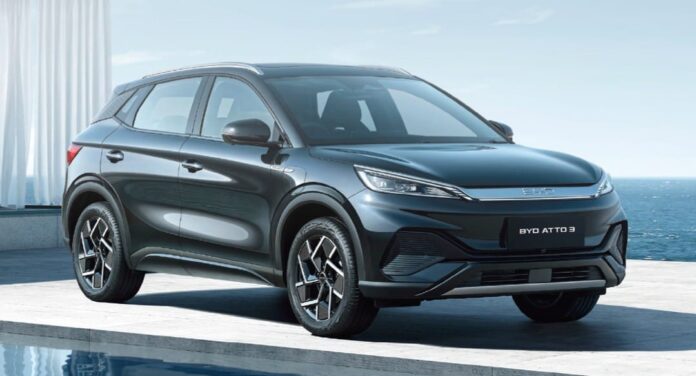BYD Co. notched up another win over Tesla Inc., reporting quarterly revenue that beat Elon Musk’s carmaker for the first time since the pair have gone head-to-head in global electric vehicle sales.
Revenue for China’s best-selling automaker soared 24% to 201.1 billion yuan ($28.2 billion) for the three months that ended in September, falling short of estimates but exceeding Tesla’s $25.2 billion in sales for the same period.
Net income increased 11.5% to a record 11.6 billion yuan, beating estimates, as BYD sold an unprecedented 1.12 million electric and plug-in hybrid vehicles and generated a gross margin of 21.9%. Its profit, however, is still overshadowed by the $2.2 billion Tesla earned.

In the first nine months, BYD had net income of 25.2 billion yuan on revenue of 502.3 billion yuan.
BYD and Tesla have emerged as leading threats to legacy automakers, particularly as Volkswagen AG, Ford Motor Co., Stellantis NV, and General Motors Co. struggle along the path to profitability with their EV transitions. As growth in consumer demand for fully electric cars wanes, BYD has been insulated more than Tesla due to its strong lineup of hybrid vehicles.
Hybrid vehicles were a major contributor to the revenue surge at Shenzhen-based BYD, with some models’ upgraded powertrains allowing for more than 2,000 kilometers of range. Another key part of BYD’s edge is its vertically integrated supply chain — making more parts in-house gives it a cost and scale advantage to produce cars more cheaply.
Tesla meanwhile is dealing with a limited and increasingly stale EV-only lineup and has been more focused on ramping up production of its Cybertruck and expanding the use of its partial-automation system marketed as Full Self-Driving.
Tesla’s AI potential and its lead in fully electric vehicle sales has helped cement its place as the world’s most valuable automaker. BYD comes in third, behind Toyota Motor Co. but ahead of VW, Mercedes, and Detroit’s three carmaking giants.
BYD has also benefited from resurgent domestic demand in China, spurred by improved national and local government subsidies aimed at tempting consumers to trade-in gas cars for EVs and hybrids. Those local sales have helped cushion BYD against overseas resistance to Chinese carmakers’ expansion.
The European Union this week imposed higher tariffs peaking at 45% on EVs from China, ratcheting up trade tensions between the world’s leading export powers. BYD doesn’t sell passenger cars in the US because of tariffs.
Earnings prospects for BYD in the final quarter look even stronger as it benefits from its leading sales position in China, the world’s biggest car market. The last three months of any year are usually the peak purchasing season, and on top of subsidies, central government agencies have been ordered to boost EV purchases.
BYD is also on track to meet its revised annual sales target of 4 million vehicles, having sold around 2.74 million vehicles through September. Citibank Inc. estimates BYD could sell as many as 500,000 units per month by November.
BYD’s Hong Kong-listed shares closed down 0.7% on Wednesday, trimming its year-to-date gain to 38%. Tesla’s stock is up 4.4% this year.
























